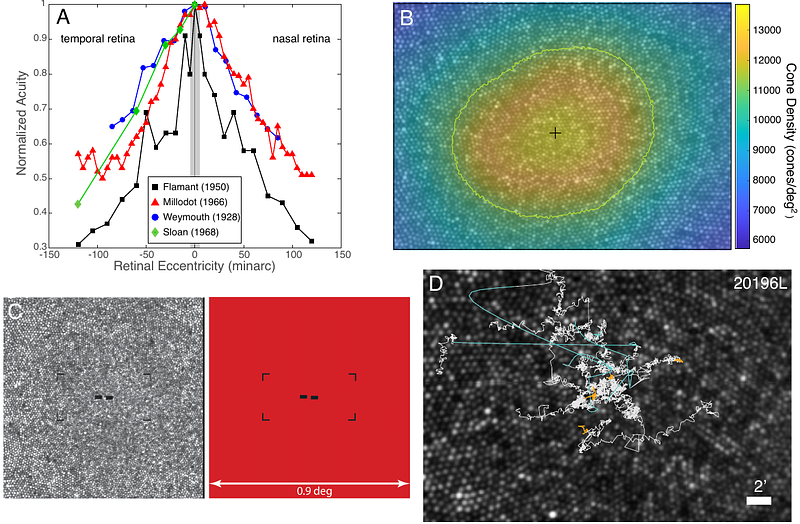The Optimal Retinal Locus for High-Resolution Vision in Space and Time

The Optimal Retinal Locus for High-Resolution Vision in Space and Time
Gautier, J.; Bowers, N. R.; Banks, M. S.; Roorda, A.
AbstractHumans exhibit machine-like eye-movement behavior in space and time while performing challenging visual resolution tasks. Fewer microsaccades occur as stimulus presentation is imminent. Drifts and microsaccades combine to confine the landing location of an anticipated visual stimulus to a tiny retinal region: the preferred retinal locus (PRL). We find that this location confers the best visual acuity despite it being offset from the anatomical fovea (the location of maximum cone density). We also find that acuity is best when the last microsaccade occurs ~400msec or longer before stimulus presentation. The machine-like eye movements are involuntary and not perceived. Our findings thus reveal a highly evolved oculomotor system such that gaze direction during fixation is rarely far enough from the PRL to cause a decline in visual resolution.